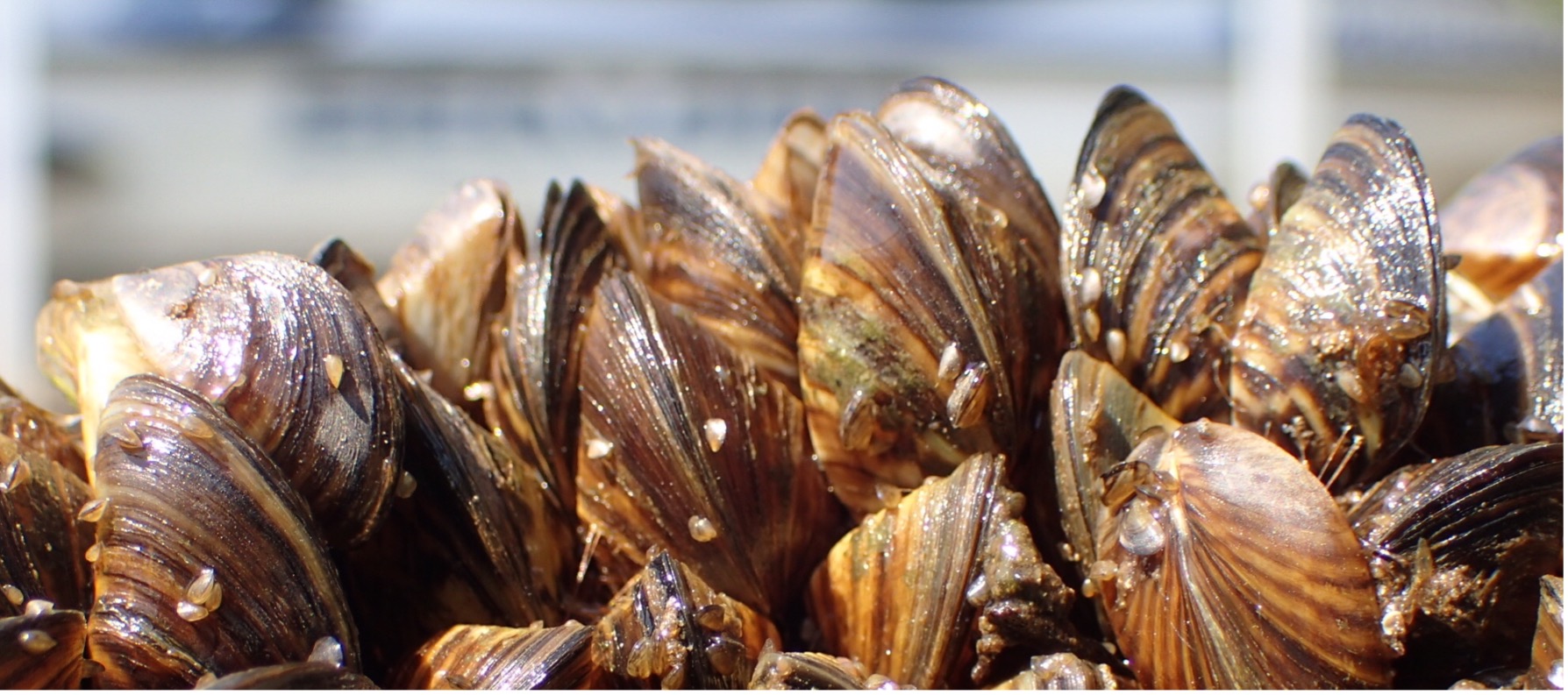Zebra mussel genome unveiled

UMGC scientists, in collaboration with researchers from the Minnesota Aquatic Invasive Species Research Center (MAISRC), the Minnesota Supercomputing Institute (MSI), Phase Genomics, and others, recently announced the completion of the zebra mussel genome in a preprint posted on bioRxiv. Zebra mussels are one of the world’s most damaging invasive species. Native to Eurasia, they have spread through Europe and in recent decades have rapidly invaded North America, causing billions of dollars in economic damage and dramatically altering the ecosystems of infested lakes and rivers.
“This genome assembly will provide a powerful new tool for researchers developing novel biocontrol strategies for zebra mussels,” says Dr. Michael McCartney, an invasive species researcher who was the Principal Investigator of the project.
Sequencing the zebra mussel genome brought to bear many of the cutting-edge DNA sequencing technologies in the UMGC. The zebra mussel genome is highly repetitive, hence long-read approaches were crucial to obtaining an assembly with high contiguity. An initial assembly was made using PacBio reads. “Isolating high-quality, high molecular weight genomic DNA was critical for producing an exceptional assembly,” said Ben Auch, a researcher in the UMGC’s Innovation Lab, who worked on the genome project. To further improve the assembly, Hi-C scaffolding was employed in collaboration with Phase Genomics. Despite the highly repetitive nature of the zebra mussel genome, the final assembly had contig N50 values over 1 Mb and chromosome-scale scaffolds, making it the highest quality molluscan genome assembled to date.
Zebra mussels are highly divergent from any previously sequenced bivalve, with more than 450 million years of evolutionary distance between them and other sequenced species, such as oysters. This is roughly the amount of evolutionary divergence that separates humans from cartilaginous fish such as sharks and rays. Thus, the zebra mussel genome fills in a large gap in the sequencing of the tree of life. In light of this, it is perhaps not surprising that this sequencing project also uncovered new and unexpected biology. UMGC researchers found that zebra mussels have a highly unusual mitochondrial genome with nearly 50 kb of tandem repeats, which at 67 kb in total makes it the largest animal mitochondrial genome ever reported.
In order to identify weaknesses that could be exploited in the fight against zebra mussels, the team carried out comparative genomic analyses and gene expression experiments to illuminate biological processes important for invasive success. In particular, the researchers identified genes required for shell formation and hardening, the generation of “byssal thread” attachment fibers, as well as tolerance of thermal stress.
“We hope to continue to collaborate with invasive species researchers to apply these insights from the genome to monitor and combat the spread of zebra mussels,” says Dr. Daryl Gohl, head of the UMGC’s Innovation Lab.
Media links:
Star Tribune article:
http://www.startribune.com/minnesota-scientists-map-genome-of-invasive-zebra-mussel/512555322/
KARE11 coverage:
https://www.kare11.com/article/news/u-researchers-map-zebra-mussel-genome/89-5c191a48-d671-49fd-b147-8fdc6ae0b581
